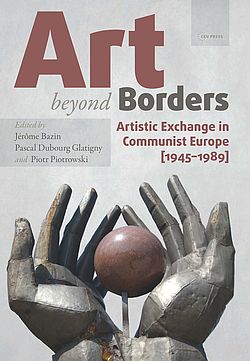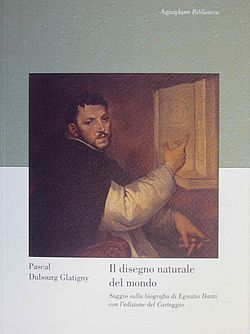Pascal Dubourg Glatigny | Chercheur associé
Ancien Membre
Biographie
Pascal Dubourg Glatigny forscht zu den
Zusammenhängen von Kunst, Wissenschaft und Technik
in der Neuzeit (16.–18. Jh.). Wissenschaftlicher Mitarbeiter
am European University Institute Florenz (1996-1999),
Promotion in Kunstgeschichte an der Université
Paris X Nanterre. Lehraufträge in Kunstgeschichte und
Architektur an den Universitäten Paris X Nanterre, Poitiers
und Lausanne. Seit 2000 am CNRS, Mitglied des Centre
Alexandre Koyré bis zu seiner Tätigkeit am Centre Marc
Bloch seit September 2006.
Sujet de recherche
Voir les publications Arts, sciences et techniques (1450-1750)
Institution de la thèse
Art beyond Borders : Artistic Exchange in Communist Europe (1945–1989)
01 avril 2016Pascal Dubourg Glatigny , Jérôme Bazin, Piotr Piotrowski
ISBN: 978-963-386-083-0
With thirty-five contributions, the present volume gathers an unusually high number of texts as a result of a collaborative elaboration over several years. Most of them are case studies on a single artist, image, exhibition, meeting, etc. From the outset, the project was conceived as a kaleidoscopic research work which takes into account the heterogeneity of the historical material and reflects the diversity of the academic community writing on art history across present-day Europe.
The volume gives a better picture of the fluctuation of exchanges, thanks to substantial and contextualized analysis, paying a particular attention to the discrepancy between the production and the reception of art. It contributes to a better understanding of the importance of communist Europe in the political economy of art during the second half of the twentieth century. It reveals a new geographical narrative made of shifting realities and expanding borders, abandoning any kind of archetypal map suggesting a crystalline explanation.
Academic works on the capitalist side have shown the relevance of universalizing ideology. As a consequence, a large part of the art produced in the East has become invisible beeing so distant from the Western canonical creations. To insist on the influence of ideology and to understand its declinations does not impoverish the analysis of works of art. We scrutinized all tendencies of the art scene, without isolating the avant-garde from the socialist realism but tracking how both of them coexisted at the heart of communist movements.
Art beyond borders offers a richer and more complex picture of the connections between ideologies and art, taking into consideration their ambitions, their contradictions, and their concrete applications.
Jérôme Bazin is associate professor in history of art and history at the University of Paris-Est
Pascal Dubourg Glatigny is senior researcher at the Centre national de la recherche scientifique (CNRS), Paris
Piotr Piotrowski (1952-2015) was professor of art history at Adam Mickiewicz University, Poznań
Il disegno naturale del mondo. Saggio sulla biografia di Egnatio Danti con l'edizione del Carteggio
10 novembre 2011Pascal Dubourg Glatigny
Quadratura : Geschichte - Theorie - Techniken
29 juin 2011Pascal Dubourg Glatigny , Hrsg. Matthias Bleyl
ISBN: 978-3-422-07063-9
Im künstlerischen Vokabular der Neuzeit ist der Begriff Quadratura mehrdeutig und benennt ursprünglich verschiedene planimetrische, geometrische und astronomische Verfahrensweisen der Mathematik. Erst im späten 17. Jahrhundert wurde er auf eine bestimmte Art der Malerei angewendet, und seit dem 19. Jahrhundert bezeichnet vorwiegend die Kunstgeschichte mit diesem Begriff eine großflächige Malerei mit illusionistischem Charakter in oder an Gebäuden, die in Italien während der Renaissance entstand und an den Gebrauch der Perspektive gebunden ist. Der Tagungsband vereint 16 internationale Beiträge, die verschiedene Aspekte der architektonischen Illusionsmalerei beleuchten: ihre geometrischen Grundlagen, ihre Position im Verbund mit anderen Künsten sowie ihre Aussagefähigkeit als Bildgattung. Eine umfassende Bibliographie rundet das Werk ab.


